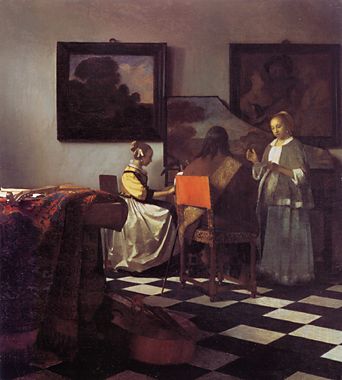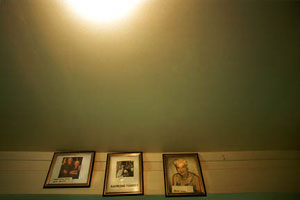By now, almost every art-goer in Boston is eerily familiar with the empty, ornate frames hanging on the walls of the Isabella Stewart Garnder Museum – reminders of a tragic and heartbreaking theft. The armed raid that took place almost fourteen years ago on Sunday, March 18, 1990, was dazzlingly simple. Two men dressed as Boston police officers convinced gallery guards to allow them to enter. The guards were tied up and in an 80-minute spree, the thieves relieved the museum of 13 pieces in total: 11 paintings and sketches, including works by Rembrandt, Vermeer, Manet and Degas; a 3,000-year-old Chinese beaker; and the bronzed top of a Napoleonic flagstaff. Strangely, they failed to take the museum's most prized work, Titian's Rape Of Europa, which was left untouched, even though it has been described by experts as arguably the greatest painting in America. Still, the $300 million loss is considered the largest heist of artwork ever. **
Now, in an interview with ABC’s “Primetime Thursday, ” the investigation seems to be once again indebted to William P. Youngworth III, who has long contended that he knows what happened to the stolen art. A former antiques dealer and ex-convict, Youngworth engaged in “intense but ultimately fruitless negotiations with the US attorney's office in 1997 over his claim that he could arrange the paintings' return in exchange for complete immunity and the reward money” – a reported $5 million.
Near the fourteenth anniversary of the theft, rumors of links to the Irish Republic Army have surfaced although Patrick Nee, a former associate of South Boston crime boss James “Whitey” Bulger denied of any IRA-Gardner connection. Nee dismissed such claims as attempts by Youngworth the cash in on movie and book offers: "Everyone's gone Hollywood. The bug's bitten everybody in this town."
At this point, there is of course a good deal of skepticism by authorities pertaining to the location and condition of the masterpieces. Although images and even scraped paint samples have supposedly been provided to investigators, there still exists a good number of moral questions regarding such negotiations with known criminals.
According to the Boston Globe: US Attorney Michael J. Sullivan said that the FBI continues to actively investigate the theft."I think under the right circumstances we would consider immunity in exchange for the return of the artwork," said Sullivan, adding that 14 years after the heist investigators still don't have the information they need to locate the artwork. "There are probably only a handful of people out there who know how the artwork was taken and a handful of people who know where it is. I would encourage those people to contact this office and the FBI to see if we could reach an agreement for the return of the artwork."*
In what seems to be the biggest Whodunit? in art’s history, one cannot help but be intrigued by the thought that the paintings might still be hanging out near the city. A reported friend of Youngworth, Myles Connor also still claims that he can help expedite the paintings' return, if he were given the go-ahead from the authorities, although he also says that he doesn't personally know of their whereabouts. "I believe they remain in the Boston area," he says, "within a 40-mile radius of the city."**
In 1997, Boston Herald reporter Tom Mashberg found himself talking to mysterious figures who were offering to take him for a drive downtown for the scoop of a lifetime. Speaking to the Guardian he stated, "I was out on a limb on this," he says. "It was late, it was dark. Nobody knew. Not even my editor." The reporter proceeded to journey into a unused warehouse in central Boston in what is no less than a scene from the best heist movie never made: “One night in mid-August, at around 2am, he was taken by some decidedly nervous and furtive-looking figures to a disused warehouse in central Boston. He describes a woman with dreadlocks coming to the car. "Billy sent us," the driver told her. Mashberg says she and other men took him up some stairs to a storage locker, where they pulled out a rolled-up canvas. By torchlight he saw what he believes was Rembrandt's Storm On The Sea Of Galilee.**
----
Links:
Recent Boston Globe article
Guardian article from 2000
Guardian gallery of missing masterpieces
The empty frames, missing the paintings (which were cut from their frames) can be seen daily at the Gardner Museum.
*Courtesy of the Boston Globe.
**Courtesy of the Guardian. http://www.guardian.co.uk
The News Editor also remains a mystery.




